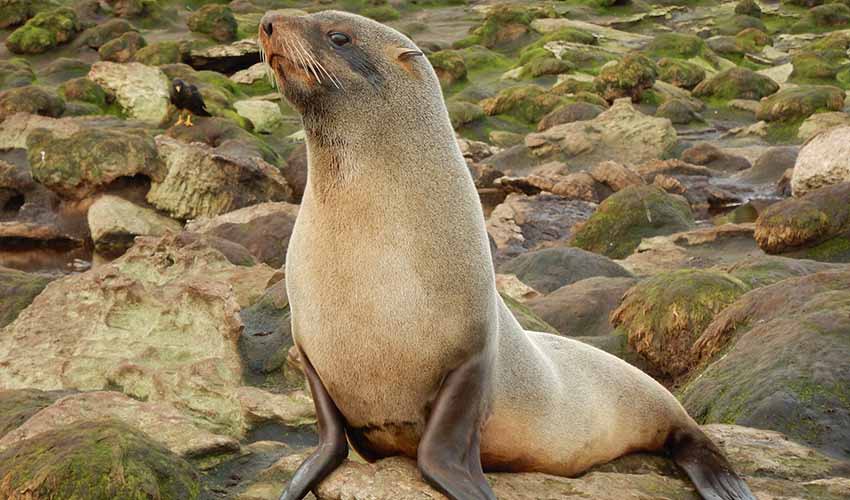Arctocephalus – Southern fur seals
All fur seals enjoy swimming on their backs, making a classic 'jug-handle' position
The Southern Fur Seals are a group of pinnipeds known for their dense underfur and distinctive appearance, which has earned them the name “bear-headed” from the Greek words “arctos” (bear) and “kephale” (head).
These seals are notable for their layered pelage, which consists of a thick underfur that provides insulation in the cold southern waters they inhabit. This underfur extends beyond the flippers, covering part of the metacarpals, a characteristic that differentiates them from their Northern counterparts, whose fur typically ends at the base of the flippers. The dense fur was once the cause of extensive hunting, drastically reducing their numbers.
Males of the species exhibit considerable size and strength, making them challenging to study in the wild. Their ferocity, especially during the breeding season, underscores the challenges researchers face when attempting to gather data on these animals. Consequently, much of the scientific knowledge about Southern Fur Seals comes from studies on pregnant females and juveniles, which are more accessible and less dangerous to approach.
Southern Fur Seals are opportunistic feeders with a diet that encompasses a wide range of marine organisms. They primarily consume small fish, squid, and krill, but they are also known to prey on seabirds and even penguins. Their foraging behavior reflects the abundant and diverse food resources available in the Southern Ocean, with seals often diving deep to capture prey in the pelagic zone.
The 18th and 19th centuries marked a dark period for Southern Fur Seals, as they were hunted to near extinction for their valuable pelts. The demand for fur led to the decimation of entire colonies, severely impacting their populations across the Southern Hemisphere. However, the implementation of conservation measures and international agreements to protect marine mammals has significantly contributed to the recovery of Southern Fur Seal populations in recent decades.
Species in this genus
Galápagos fur seal
Have some of the best eyesight among marine mammals, which helps them see in the dark, deep waters where they hunt
Antarctic fur seal
Has one of the warmest fur of any mammal
Brown fur seal
Aren’t just rocking a single fur coat; they’ve got a double-layered defense against the elements
Guadalupe fur seal
Has large, expressive eyes, which help them see in the dim light of the deep ocean
Juan Fernández fur seal
The population was once thought to be extinct until a group of 200 individuals was found on Juan Fernández islands in the 1960s
New Zealand fur seal
Heavily hunted in the 18th and 19th centuries for their pelts and oil
South American fur seal
Its thick, luxurious fur was once heavily hunted for the fur trade
Subantarctic fur seal
Once nearly wiped out, it now thrives in great numbers









